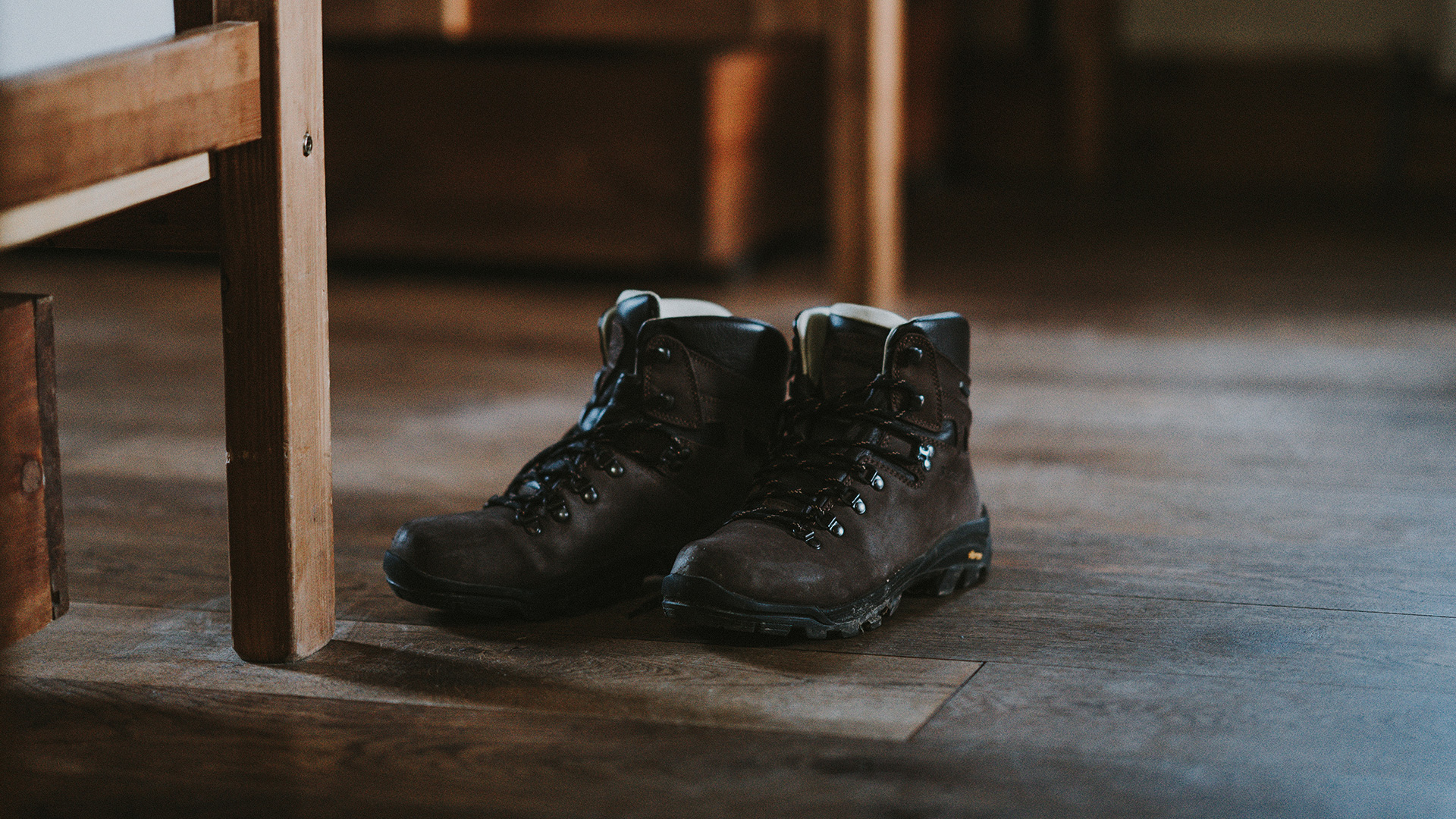How to break in hiking boots: 6 hacks to break in boots effectively
Here are our top tips for how to break in hiking boots effectively (plus your guide to the hacks that definitely won't work)


For any kind of hiking, finding the right footwear is essential. A pair of the best hiking boots should see you happily tackle any trail or trek – but not straight away. If you don't break in hiking boots properly, they're worse than useless. Boots are made to a 'last' – a generic foot mould, around which they are shaped and stitched. But if you look at your foot, you will see creases and callouses, folds and arches: every foot is different, thanks to the structure of your body, and that way that you walk.
A brand new boot has a stiff sole, generic insole and stiff upper (the fabric of the boot). It won't flex and move as your foot does, meaning that there will be friction points and loose points, leading to soreness and blisters. Heading straight for the hills in a new pair of boots will only lead to trouble. You need to break them in.
- Complete your kit with one of the best waterproof jackets
'Breaking in a boot' means softening the fabric and sole, and getting it to fold in the same way that your foot does. In doing so, the boot will gradually 'mould' to your foot and become more comfortable. In its most basic form, you are just undertaking a series of walks, each of which is slightly longer than the previous one.
Many 'light' boots, and soft synthetic boots will feel comfortable immediately, but don't be fooled – they will still have hot-spots, and breaking them in will help. Here's our top tips for how to break in hiking boots effectively (plus a run-down of the 'top tricks' that definitely won't work).
1. Shop carefully
Start with boots that fit you. Different brands and styles use different lasts, so find the one that fits you best, and ensure they fit properly. We have a number of buying guides to help you out here: check out our rankings of the best hiking boots for men, or the best women's hiking boots. Alternatively, if you want something more lightweight, try our guides to the best walking shoes overall, and the best women's walking shoes.
Synthetic boots will feel more comfortable straight out of the box. But, whilst leather boots can be uncomfortable to start with, they will shape to your foot, and hold that shape better than synthetic ones.

2. Wear them round the house
Put your boots on with the socks that you would walk in, and just move around the house. Wear them for dinner, whilst you're watching TV, and whilst you are doing normal household chores, like washing up and cleaning.
Get all the latest news, reviews, deals and buying guides on gorgeous tech, home and active products from the T3 experts
As you move around, you will force the boot to move like your foot does, and the heat will soften the materials. The sole will start to flex where your foot does (beneath the ball of your foot), and the upper will start to crease behind your toes, and around the ankle. At this point, if you realise that you've bought the wrong size, you can still return the boots, because you've not worn them outside.
- Check out the best hiking socks right now
3. Work the leather
Leather softens over time, and full-grain leather (as found in mountaineering boots) will take longer to do so. But all leather will soften faster with wax and manipulation. Use your fingers to work the wax into flexion points behind the toes and on the ankle. Then, grab hold of the boots, and flex them with both hands. This will help soften the sole, too, which is important because an inflexible sole can cause your heel to lift.
4. Go for short walks
Moving around the house will have softened your boots up, but it's a different movement pattern to continuous walking. So the next step in breaking in your hiking boots is to wear them whilst running errands, like popping to the shops.
This is also a great chance to test different lacing styles. The ankle hook between the upper and lower laces will lock off the slack between the two sets, so try tight lower laces with loose upper ones, and vice-versa. See what gives you the right combination of comfort, contact and stability. After a few cumulative hours of walking like this, your boots should have softened and flexed to your natural movement pattern.
5. Tape up hotspots
During your short walks, you will probably find a few points getting sore, such as the heel, top of your big toes, and outside of your big toe. Use surgical tape or sports tape, such as Leukotape, to reduce rubbing against your skin.
6. Now go for longer walks
With your hot spots taped-up, you can go for a longer walk around town, without forming blisters. Start going up hills and over rough ground, where your movement pattern is different. When you go for day-hikes, it's still worth taping-up your hotspots. Eventually, the boot will soften and mould around them, and the tape will no longer be needed.
DON'T do this...
There are dozens of articles about 'breaking your boots in fast'. Don't believe them. DON'T put your boots in the freezer with water bags in them (they can split). DON'T heat them with hairdryers (it can melt the glue).
Instead, just take your time and follow the process, and you'll have a pair of boots that will get more comfy every time you wear them. Until they fall apart, and you have to start the whole process all over again!

Ash Bhardwaj is a writer, film-maker and podcaster, who tells unfamiliar stories about familiar places. He travels for adventure, history and current affairs – often involving long, uncomfortable walks. Ash hosts The First Mile, an immersive travel podcast.